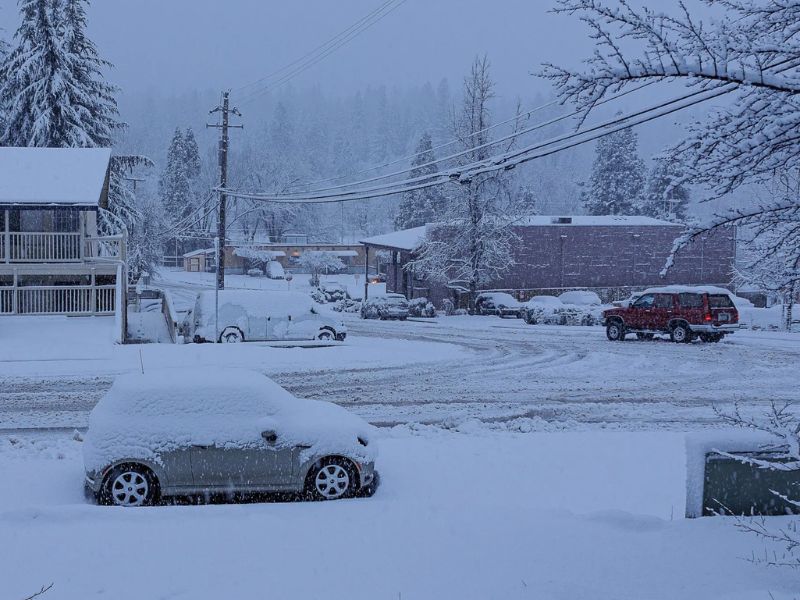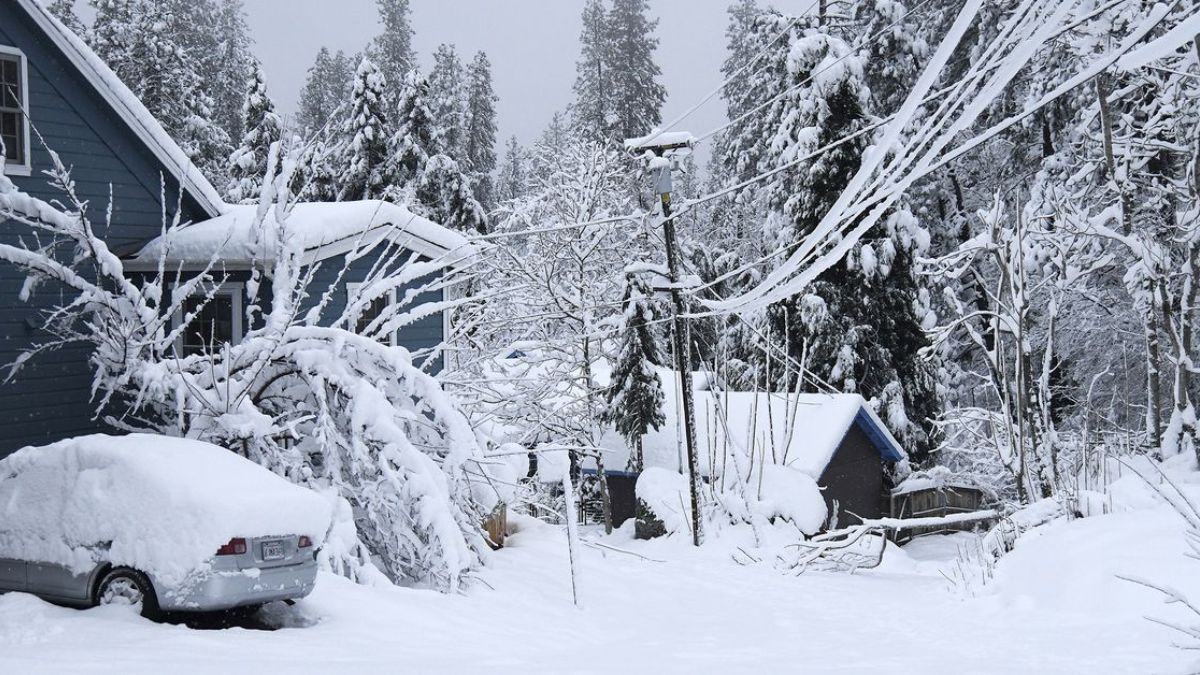Yes, it does snow in Grass Valley, California, although the frequency and amount of snowfall can vary from year to year. Grass Valley is located in the western foothills of the Sierra Nevada mountain range, and while it is not known for heavy snowfall like some higher-elevation mountainous areas, it does experience occasional snowfall during the winter months.
Snowfall in Grass Valley is typically light, and the accumulation is generally limited to a few inches at most. The snow often melts quickly, and it is rare for the snow to stay on the ground for an extended period.
However, when snow does fall, it can create a picturesque winter landscape, adding a touch of charm to the already beautiful surroundings. It is worth noting that the amount of snowfall in Grass Valley can be unpredictable.

Grass Valley, California, is a picturesque city known for its historic charm and beautiful landscapes. As visitors and residents explore this region, one question that often arises is whether or not it snows in Grass Valley.
Let’s find out together, “Does it snow in Grass Valley, CA?”
Location Overview
Grass Valley is a city located in Nevada County, California, in the western foothills of the Sierra Nevada mountain range. The city is situated at an elevation of approximately 2,500 feet above sea level. Grass Valley offers a picturesque setting with rolling hills, oak woodlands, and scenic vistas.
The city is known for its historic charm, vibrant downtown area, and proximity to outdoor recreational opportunities in the surrounding natural landscapes. There are many engaging opportunities in the city itself, and if you are willing for a snowy escape, then nearby destinations are more than one can desire.
Geography and Climate of Grass Valley
Before we delve into the snowfall patterns, it is important to understand the geography and general climate of Grass Valley. The city falls within the Mediterranean climate zone, characterized by hot, dry summers and cool, wet winters.
The region is known for its diverse flora and fauna, with oak woodlands and coniferous forests dotting the landscape. The geographical location of Grass Valley can have an influence on snowfall in the area.
While Grass Valley receives occasional snowfall during the winter, the lower elevation compared to higher-elevation mountain regions results in generally lighter and less frequent snow accumulation.
Historical Snowfall Record
Snowfall does occur in Grass Valley, but the amount and frequency are not quite notable. There aren’t any distinct historical snowfall records of the area. However, the mountainous regions nearby tend to receive more snow.
The annual snowfall amount in Grass Valley, California, can vary yearly. On average, Grass Valley receives around 16 inches of snowfall per year. However, this is an approximate average, and actual snowfall amounts can be higher or lower in any given year.
Winter Season & Snowfall Pattern
While Grass Valley experiences distinct seasonal variations, with warm summers and mild winters, it is not immune to temperature extremes.
During the summer months, temperatures can reach highs in the 90s Fahrenheit. In contrast, winter temperatures tend to be milder, with average highs ranging from the 40s Fahrenheit to the 50s Fahrenheit.
- Precipitation and Snowfall in Grass Valley
Grass Valley receives considerable rainfall throughout the year, with the majority occurring during the winter months. The precipitation in Grass Valley primarily comes in the form of rain, owing to its relatively low elevation of around 2,500 feet above sea level.
- Snowfall Patterns in Grass Valley
While Grass Valley does not experience heavy snowfall like some mountainous regions, it occasionally sees snowflakes dusting the ground. The frequency and amount of snowfall can vary significantly, and some winters may bring several light snowfalls while others may see little to no snow accumulation.
- Snowfall Impact on Grass Valley
When snow falls in Grass Valley, it often creates a scenic winter wonderland for residents and visitors. However, snowfall in the region is typically light and melts quickly. The accumulation is usually limited to a few inches at most, and the snow rarely stays on the ground for an extended period.
Locations to Enjoy Snow
Despite not experiencing heavy snowfall like some mountainous regions, Grass Valley, California, still offers nearby locations where you can enjoy snow-related activities. Here are a few suggestions:
- Tahoe National Forest
Located northeast of Grass Valley, Tahoe National Forest offers opportunities for winter recreation. You can find areas for snowshoeing, cross-country skiing, snowmobiling, and even sledging.
- Boreal Mountain Resort
Situated just a short drive from Grass Valley, Boreal Mountain Resort is a popular destination for skiing and snowboarding. The resort features various slopes suitable for different skill levels and offers rentals and lessons.
- Sugar Bowl Ski Resort
Another nearby ski resort, Sugar Bowl, is known for its scenic slopes and family-friendly atmosphere. It offers a range of winter activities, including skiing, snowboarding, tubing, and snowshoeing.
- Yuba River
During winter, the Yuba River and its surrounding areas can transform into a beautiful winter wonderland. You can explore the riverside trails, build snowmen, or simply enjoy the serene winter scenery.
- Donner Summit
Located to the east of Grass Valley, Donner Summit is a stunning mountain pass that receives more snowfall. It provides opportunities for snowshoeing, backcountry skiing, and winter photography.
It is always a good idea to be prepared with appropriate clothing, equipment, and knowledge of safety protocols when engaging in winter activities.
Factors Influencing Snowfall
Several factors influence snowfall in Grass Valley, California. The first is elevation. Grass Valley sits at a lower elevation compared to the higher-elevation mountainous areas nearby, which affects the amount and frequency of snowfall.
Additionally, the proximity to the Sierra Nevada mountain range plays a role, as it can create a rain shadow effect, reducing the amount of moisture available for snowfall. Weather patterns, including storms and the interaction between warm and cold air masses, also impact snowfall.
Finally, climate change and long-term weather patterns can introduce further variability to snowfall amounts in the region.
Conclusion
While Grass Valley, CA, does not experience heavy snowfall like some of the neighboring mountainous regions, it does receive occasional snowflakes in winter. Snowfall in Grass Valley is generally light and melts quickly, making it more of a scenic spectacle than a major weather event.
However, the region offers plenty of activities and attractions to make the most of the winter season, whether it snows or not. So, if you are planning a visit to Grass Valley during the winter, be prepared for a potentially charming dusting of snow that adds a touch of magic to this already beautiful destination.
